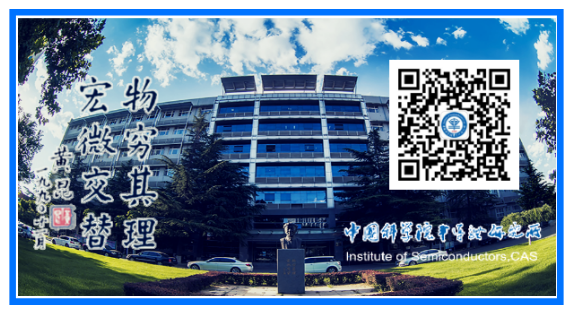
Source: Chip Theory
Original Author: Tian Gao Yun Dan Andi863
This article mainly introduces the rapid development of the chip industry along the trajectory of Moore’s Law during the 40 years from 1970 to 2010. Intel has been the flagbearer of chip technology development, with the x86 series CPUs, Pentium series CPUs, and Core series CPUs becoming milestones in the development of desktop computer CPU chips. The desktop internet has become the main driving force for the advancement of chip technology and industrial development. FinFET circuit technology, 3D chip technology, and multi-core CPU technology have provided strong support for the subsequent mobile terminal chip technology. This article is the second part, mainly discussing the history of how the mobile internet became the driving force for the advancement of chip technology and industrial development after 1990.
9. Mobile terminal chips become a vital force driving the chip industryIn 1971, American inventor Samuel Hurst invented the resistive touchscreen. Samuel and his ten partners applied for a patent for the resistive touchscreen and co-founded Elographics. The first batch of 25 touchscreens produced was named E-100. In 1973, Elographics was awarded the “Top 100 Technology Products” of the year, and business began to flourish.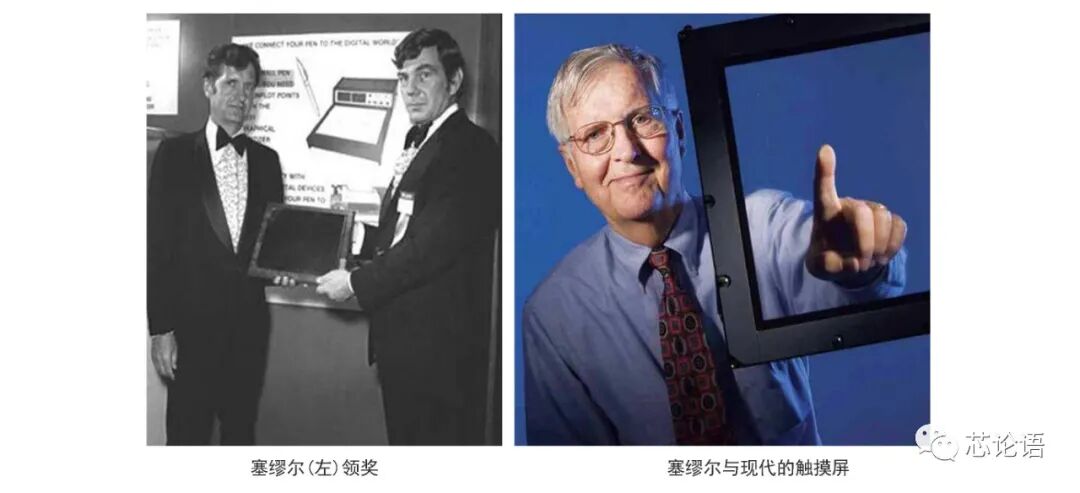 Figure 40. Samuel Hurst, inventor of the resistive touchscreen (Source: Reference Material 4)In 1991, ARM was established in Cambridge, UK, marking a great company of the mobile internet era. ARM established a new business model for microprocessor design, production, and sales by licensing RISC microprocessor (CPU) IP. Using RISC CPU technology, ARM supported many well-known semiconductor companies, chip design companies, software, and OEM manufacturers in developing their chips and complete products, nurturing a large family of ARM CPUs and SoC chips.
Figure 40. Samuel Hurst, inventor of the resistive touchscreen (Source: Reference Material 4)In 1991, ARM was established in Cambridge, UK, marking a great company of the mobile internet era. ARM established a new business model for microprocessor design, production, and sales by licensing RISC microprocessor (CPU) IP. Using RISC CPU technology, ARM supported many well-known semiconductor companies, chip design companies, software, and OEM manufacturers in developing their chips and complete products, nurturing a large family of ARM CPUs and SoC chips.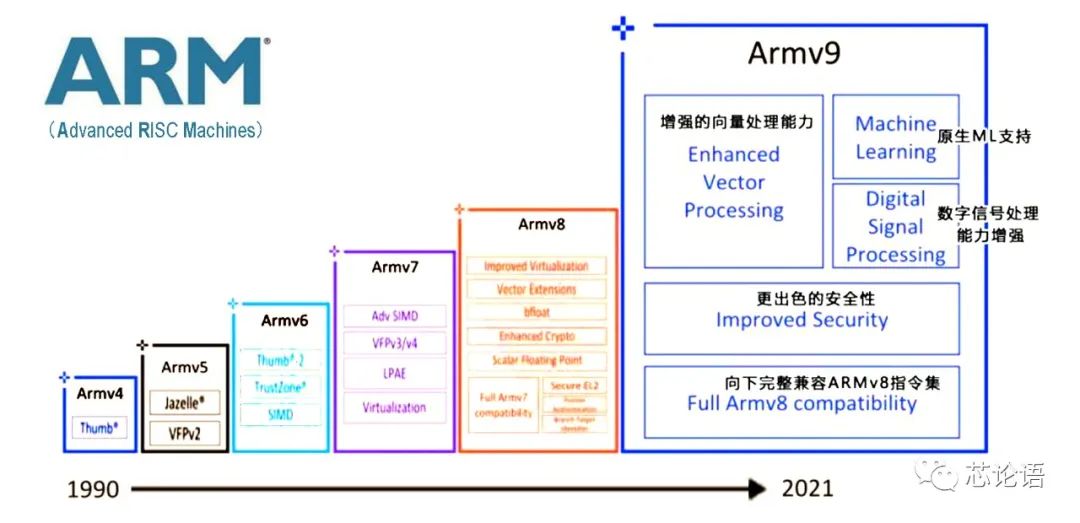 Figure 41. Development history of ARM microprocessor architecture (Source: Reference Material 1)
Figure 41. Development history of ARM microprocessor architecture (Source: Reference Material 1)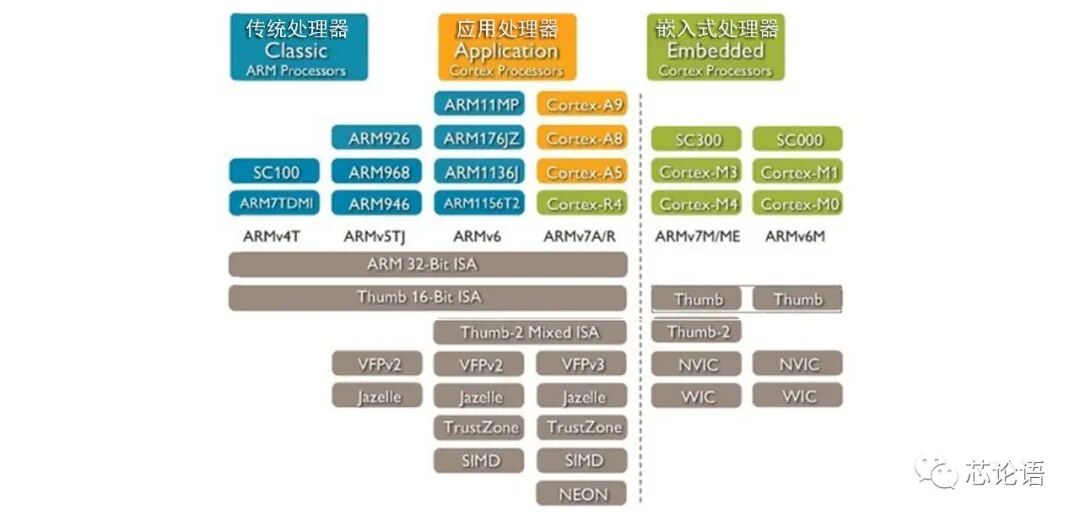 Figure 42. Classification of ARM traditional, application-oriented, and embedded microprocessor IP (Source: Internet Image)ARM’s business model has promoted the development of the mobile terminal chip industry. The nearly thirty-year development history of the chip industry proves that ARM’s unique business model is successful, supporting a large number of small and micro fabless chip design companies to grow and supporting rapid iteration and upgrading of chip design technology and rapid industrial development. ARM has gradually extended from the mobile terminal field to the desktop PC and server fields, challenging the leading position of chip giant Intel. In 2006, global ARM chip shipments were about 2 billion units, and by 2010, shipments of ARM-based chips from partners exceeded 6 billion units. Currently, ARM has over 1,200 licensed users.In 1993, IBM launched the world’s first touchscreen phone – IBM Simon. It is recognized as the world’s first touchscreen smartphone, a monochrome stylus touchscreen smartphone. It combined the functions of a mobile phone, personal digital assistant, pager, fax machine, calendar, itinerary planner, world clock, calculator, notepad, email, and games, causing quite a stir at the time. When it was fully launched in 1994, it was priced at $899 and was available in nearly 200 cities in the United States. In 2003, Motorola also produced its first touchscreen phone.
Figure 42. Classification of ARM traditional, application-oriented, and embedded microprocessor IP (Source: Internet Image)ARM’s business model has promoted the development of the mobile terminal chip industry. The nearly thirty-year development history of the chip industry proves that ARM’s unique business model is successful, supporting a large number of small and micro fabless chip design companies to grow and supporting rapid iteration and upgrading of chip design technology and rapid industrial development. ARM has gradually extended from the mobile terminal field to the desktop PC and server fields, challenging the leading position of chip giant Intel. In 2006, global ARM chip shipments were about 2 billion units, and by 2010, shipments of ARM-based chips from partners exceeded 6 billion units. Currently, ARM has over 1,200 licensed users.In 1993, IBM launched the world’s first touchscreen phone – IBM Simon. It is recognized as the world’s first touchscreen smartphone, a monochrome stylus touchscreen smartphone. It combined the functions of a mobile phone, personal digital assistant, pager, fax machine, calendar, itinerary planner, world clock, calculator, notepad, email, and games, causing quite a stir at the time. When it was fully launched in 1994, it was priced at $899 and was available in nearly 200 cities in the United States. In 2003, Motorola also produced its first touchscreen phone.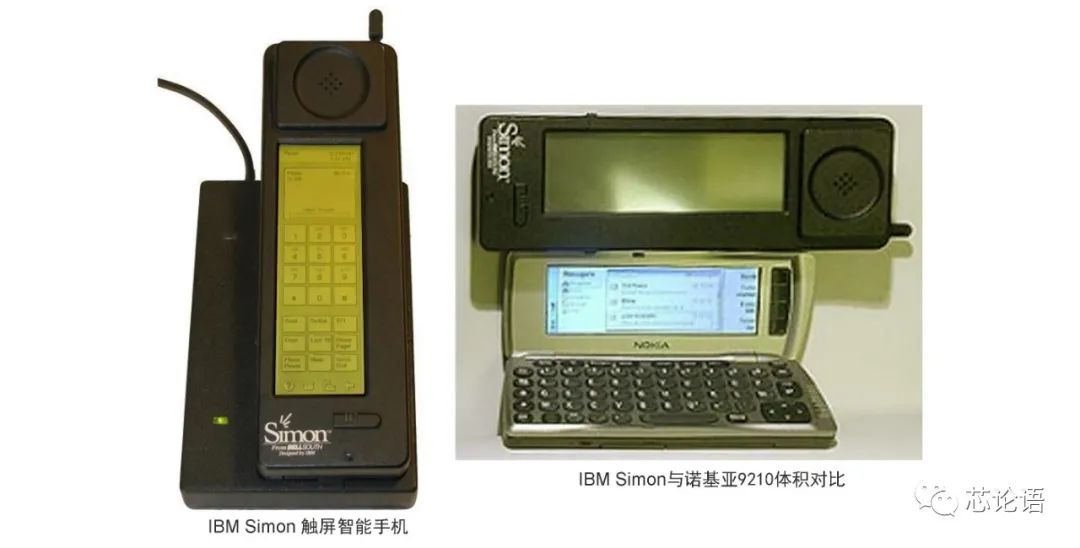 Figure 43. IBM Simon touchscreen smartphone (Source: Reference Material 4)In 1998, AuthenTec was established in the United States, supporting innovative features for Apple smartphones. AuthenTec is the largest supplier of capacitive fingerprint recognition sensors globally, with its fingerprint recognition components embedded in Windows laptops many years ago, and it is also the creator of Touch ID on Apple iPhones. In 2012, AuthenTec was acquired by Apple, and its fingerprint recognition chip products were all used in Apple smartphones and tablets.
Figure 43. IBM Simon touchscreen smartphone (Source: Reference Material 4)In 1998, AuthenTec was established in the United States, supporting innovative features for Apple smartphones. AuthenTec is the largest supplier of capacitive fingerprint recognition sensors globally, with its fingerprint recognition components embedded in Windows laptops many years ago, and it is also the creator of Touch ID on Apple iPhones. In 2012, AuthenTec was acquired by Apple, and its fingerprint recognition chip products were all used in Apple smartphones and tablets.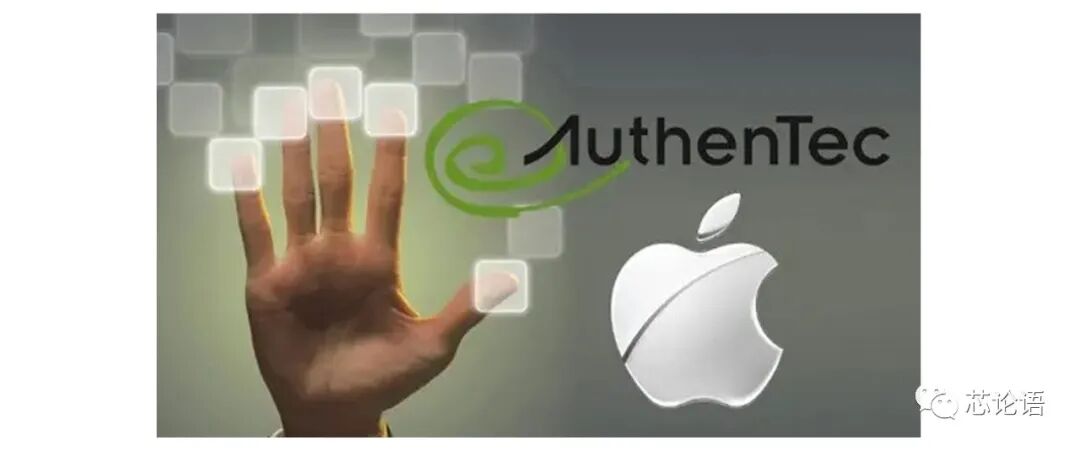 Figure 44. AuthenTec and iPhone Touch ID (Source: Internet Image)In 1999, Motorola launched the first smartphone A6188. It was a touchscreen phone and the first smartphone capable of Chinese handwriting recognition input.
Figure 44. AuthenTec and iPhone Touch ID (Source: Internet Image)In 1999, Motorola launched the first smartphone A6188. It was a touchscreen phone and the first smartphone capable of Chinese handwriting recognition input.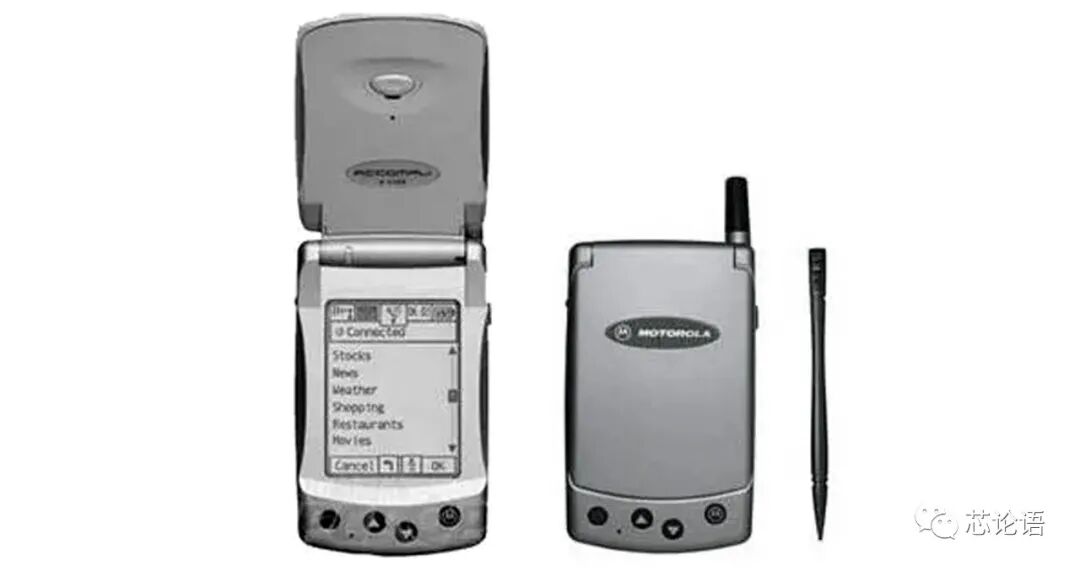 Figure 45. Motorola A6188 touchscreen smartphone (Source: Internet Image)In 2003, Andy Rubin and others founded Android Inc. and formed the Android team. In 2005, Google quietly acquired the high-tech company Android and its team, which had been established for only 22 months. Andy Rubin became the Vice President of Engineering at Google, continuing to oversee the Android project.
Figure 45. Motorola A6188 touchscreen smartphone (Source: Internet Image)In 2003, Andy Rubin and others founded Android Inc. and formed the Android team. In 2005, Google quietly acquired the high-tech company Android and its team, which had been established for only 22 months. Andy Rubin became the Vice President of Engineering at Google, continuing to oversee the Android project.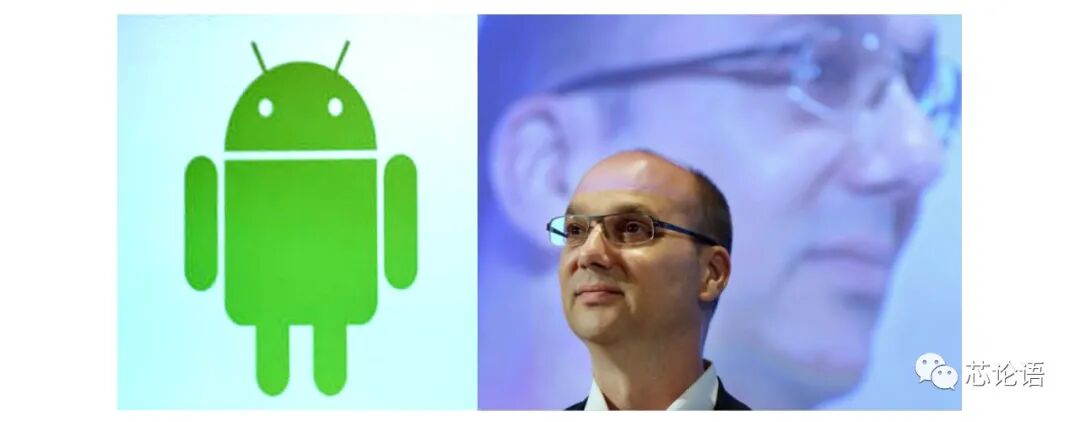 Figure 46. Andy Rubin and the Android system (Source: Internet Image)In 2005, Intel abandoned its mobile business, later realizing it had lost an opportunity in the mobile internet era. In 2005, the global mobile application processor market totaled $839 million, with Texas Instruments accounting for 69%, Qualcomm 17%, and Intel only 7%. Since mobile terminal chips were far less profitable than desktop PC and server chips, Intel sold its PXA mobile business to MARVEL and exited the mobile terminal chip field.Initially, Intel missed the opportunity in mobile chips but later recognized this opportunity. However, after several efforts, it still failed to grasp the essence of mobile chips and was ultimately pushed out by thousands of SoC chip companies led by ARM. This is a brilliant interpretation of “rural encirclement of the city” in the mobile internet era.
Figure 46. Andy Rubin and the Android system (Source: Internet Image)In 2005, Intel abandoned its mobile business, later realizing it had lost an opportunity in the mobile internet era. In 2005, the global mobile application processor market totaled $839 million, with Texas Instruments accounting for 69%, Qualcomm 17%, and Intel only 7%. Since mobile terminal chips were far less profitable than desktop PC and server chips, Intel sold its PXA mobile business to MARVEL and exited the mobile terminal chip field.Initially, Intel missed the opportunity in mobile chips but later recognized this opportunity. However, after several efforts, it still failed to grasp the essence of mobile chips and was ultimately pushed out by thousands of SoC chip companies led by ARM. This is a brilliant interpretation of “rural encirclement of the city” in the mobile internet era.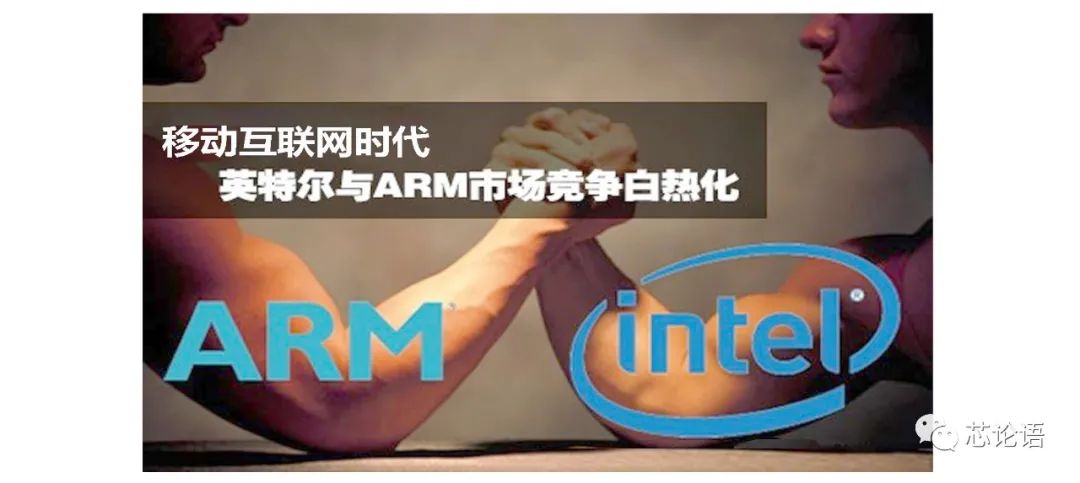 Figure 47. Competition between ARM and Intel in the mobile internet era (Source: Internet Image)In 2005, MTK seized the opportunity in the counterfeit phone business and caught the fast train of the mobile internet era. Taiwan’s MediaTek (MTK) was established in 1997, and in 2005, MTK completed the development of GSM chips. To sell chips, they integrated mobile application processors and GSM processors together, providing a one-stop mobile solution with MTK chips, along with a complete software development kit (SDK), pre-integrating mobile chips and software platforms, significantly lowering the threshold for mobile manufacturers to develop a phone. In 2007, China canceled mobile phone licenses, leading to a surge of small phone manufacturers in Shenzhen. Manufacturers in Huaqiangbei, Shenzhen, leveraged MTK chips and solutions to dominate the market, gaining fame for counterfeit phones. MTK’s founder, Cai Mingjie, is also known as the “father of counterfeit phones.” MTK chips have made Huaqiangbei famous and have also made MediaTek successful.
Figure 47. Competition between ARM and Intel in the mobile internet era (Source: Internet Image)In 2005, MTK seized the opportunity in the counterfeit phone business and caught the fast train of the mobile internet era. Taiwan’s MediaTek (MTK) was established in 1997, and in 2005, MTK completed the development of GSM chips. To sell chips, they integrated mobile application processors and GSM processors together, providing a one-stop mobile solution with MTK chips, along with a complete software development kit (SDK), pre-integrating mobile chips and software platforms, significantly lowering the threshold for mobile manufacturers to develop a phone. In 2007, China canceled mobile phone licenses, leading to a surge of small phone manufacturers in Shenzhen. Manufacturers in Huaqiangbei, Shenzhen, leveraged MTK chips and solutions to dominate the market, gaining fame for counterfeit phones. MTK’s founder, Cai Mingjie, is also known as the “father of counterfeit phones.” MTK chips have made Huaqiangbei famous and have also made MediaTek successful. Figure 48. MTK founder Cai Mingjie and Huaqiangbei, Shenzhen (Source: Internet Image)2006 is considered the year of multi-core CPUs. On July 23 of that year, Intel released CPUs based on the Core architecture. In November, Intel launched the Xeon 5300 series and Core 2 dual-core and quad-core supreme series CPUs aimed at servers, workstations, and high-end PCs. Compared to the previous generation of desktop CPUs, the Core 2 dual-core CPU improved performance by 40% while reducing power consumption by 40%.Who invented the widely used capacitive touchscreen? It is still unverified. It may have been completed by many researchers continuously improving it together. After 1990, technological inventions were rarely completed by a single scientist; they are generally the result of collective wisdom, and the intellectual property belongs to companies. The Motorola Palm Pilot in 1997 and Motorola’s first smartphone A6188 in 1999 both used resistive touchscreens and required stylus input.In 2007, LG launched the Prada multi-touch capacitive touchscreen, eliminating the need for a stylus, with finger click accuracy already quite high. In June 2007, Apple launched the iPhone with a multi-touch capacitive touchscreen, achieving excellent touch sensitivity and smoothness. Since then, capacitive touchscreens have developed rapidly.
Figure 48. MTK founder Cai Mingjie and Huaqiangbei, Shenzhen (Source: Internet Image)2006 is considered the year of multi-core CPUs. On July 23 of that year, Intel released CPUs based on the Core architecture. In November, Intel launched the Xeon 5300 series and Core 2 dual-core and quad-core supreme series CPUs aimed at servers, workstations, and high-end PCs. Compared to the previous generation of desktop CPUs, the Core 2 dual-core CPU improved performance by 40% while reducing power consumption by 40%.Who invented the widely used capacitive touchscreen? It is still unverified. It may have been completed by many researchers continuously improving it together. After 1990, technological inventions were rarely completed by a single scientist; they are generally the result of collective wisdom, and the intellectual property belongs to companies. The Motorola Palm Pilot in 1997 and Motorola’s first smartphone A6188 in 1999 both used resistive touchscreens and required stylus input.In 2007, LG launched the Prada multi-touch capacitive touchscreen, eliminating the need for a stylus, with finger click accuracy already quite high. In June 2007, Apple launched the iPhone with a multi-touch capacitive touchscreen, achieving excellent touch sensitivity and smoothness. Since then, capacitive touchscreens have developed rapidly. Figure 49. The world’s first multi-touch capacitive touchscreen phone LG PRADA (Source: Internet Image)In July 2007, Apple launched the iPhone, setting a standard for smartphones. The iPhone eliminated the complex structures of previous flip and slide phones, presenting a simple and stylish design that was refreshing. It replaced the previously common stylus with a multi-touch finger touchscreen, greatly improving user experience. Since then, smartphones have appeared with a flat display and multi-touch touchscreen, ending the diverse styles of previous phones, simplifying phone operations, and promoting the popularity of mobile intelligent terminals (including smart phones, tablets, etc.), playing an important role in the development of the mobile internet industry. It also promoted technological innovation in mobile terminal chips.
Figure 49. The world’s first multi-touch capacitive touchscreen phone LG PRADA (Source: Internet Image)In July 2007, Apple launched the iPhone, setting a standard for smartphones. The iPhone eliminated the complex structures of previous flip and slide phones, presenting a simple and stylish design that was refreshing. It replaced the previously common stylus with a multi-touch finger touchscreen, greatly improving user experience. Since then, smartphones have appeared with a flat display and multi-touch touchscreen, ending the diverse styles of previous phones, simplifying phone operations, and promoting the popularity of mobile intelligent terminals (including smart phones, tablets, etc.), playing an important role in the development of the mobile internet industry. It also promoted technological innovation in mobile terminal chips.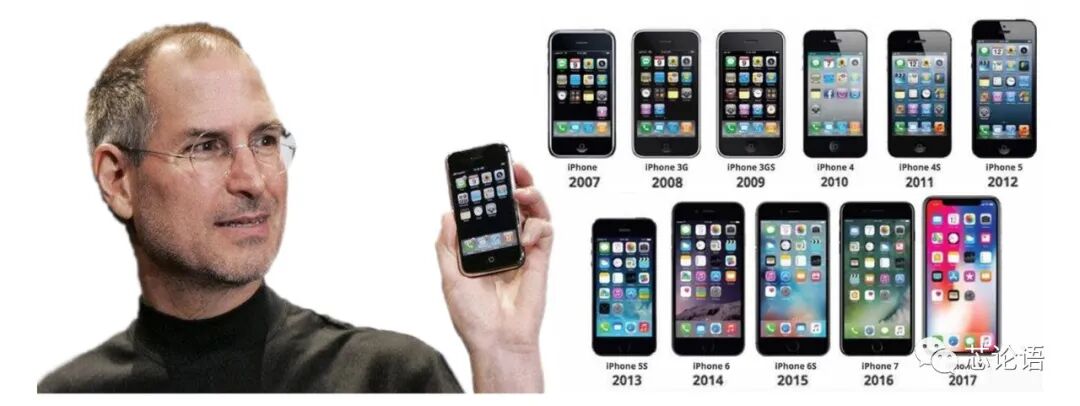 Figure 50. Steve Jobs and the iPhone smartphone series (Source: Internet Image)In November 2007, Google showcased an operating system called Android. At the same time, Google announced the establishment of a global mobile ecosystem alliance, consisting of 34 chip manufacturers, mobile manufacturers, software developers, and telecom operators. They formed an open handheld device alliance with 84 hardware manufacturers, software vendors, and telecom operators to jointly develop and improve the Android system. Alliance members would support the mobile operating system and applications released by Google, with Google releasing the source code of Android under the Apache open-source license.According to data from 2011, the number of applications for the Android system had reached 480,000, and the market share of Android phones in the smartphone market had reached 43%.
Figure 50. Steve Jobs and the iPhone smartphone series (Source: Internet Image)In November 2007, Google showcased an operating system called Android. At the same time, Google announced the establishment of a global mobile ecosystem alliance, consisting of 34 chip manufacturers, mobile manufacturers, software developers, and telecom operators. They formed an open handheld device alliance with 84 hardware manufacturers, software vendors, and telecom operators to jointly develop and improve the Android system. Alliance members would support the mobile operating system and applications released by Google, with Google releasing the source code of Android under the Apache open-source license.According to data from 2011, the number of applications for the Android system had reached 480,000, and the market share of Android phones in the smartphone market had reached 43%.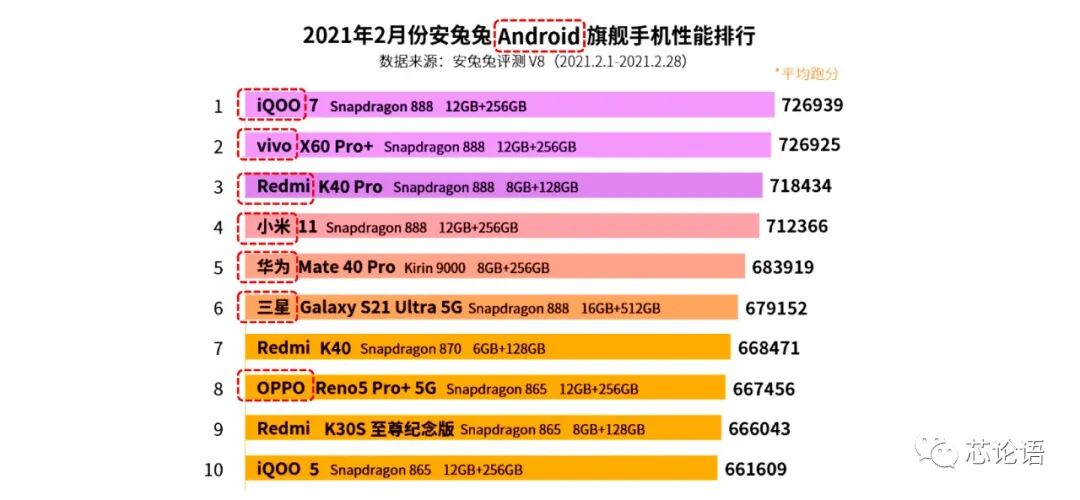 Figure 51. Major Android flagship phone brands (Source: Internet Image)The two major camps of mobile terminal operating systems and their application products. Google’s open-source operating system Android and Apple’s closed operating system iOS form the dual giants of operating systems in the mobile internet era – Apple and Android systems, which learn from each other, compete, and continue to grow. In the future, a new star in mobile internet operating systems may rise, which is Huawei’s HarmonyOS. The mobile internet industry based on smartphones and mobile intelligent terminals is gradually replacing the desktop internet industry, becoming the main driving force for chip technology innovation and industrial development.
Figure 51. Major Android flagship phone brands (Source: Internet Image)The two major camps of mobile terminal operating systems and their application products. Google’s open-source operating system Android and Apple’s closed operating system iOS form the dual giants of operating systems in the mobile internet era – Apple and Android systems, which learn from each other, compete, and continue to grow. In the future, a new star in mobile internet operating systems may rise, which is Huawei’s HarmonyOS. The mobile internet industry based on smartphones and mobile intelligent terminals is gradually replacing the desktop internet industry, becoming the main driving force for chip technology innovation and industrial development.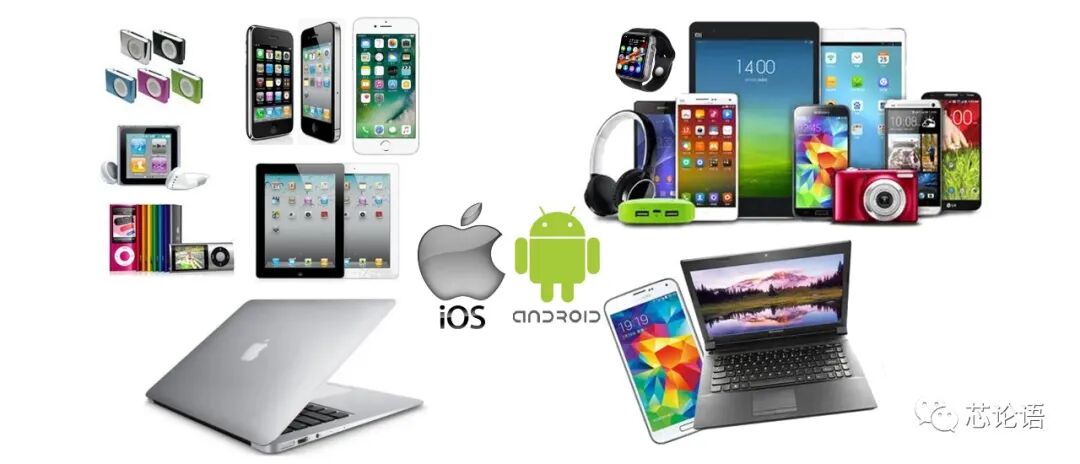 Figure 52. The two camps of mobile intelligent terminals: Apple and Android (Source: Internet Image)In 2008, HTC, founded in 1997, launched the world’s first Android phone, T-Mobile G1. It became the first challenger to Apple’s iOS system. This phone used Qualcomm’s MSM720 series processor, which adopted a dual-core solution (ARM11 + ARM9 dual-core architecture), internally containing a 3D graphics processing module and a 3G communication module, providing high-resolution image and video playback capabilities, with excellent streaming performance. Throughout the communication industry, Qualcomm finally understood how to make the SoC for smartphones.Mobile chip companies have grown alongside mobile device companies. HTC’s smartphones have iterated and upgraded alongside Qualcomm’s mobile chips, establishing Qualcomm’s dominance in communication chips in the Android field. However, HTC ultimately did not achieve success after its glorious period; by 2017, HTC’s mobile business was struggling, and in January 2018, Google announced it would acquire HTC’s mobile manufacturing business for $1.1 billion.
Figure 52. The two camps of mobile intelligent terminals: Apple and Android (Source: Internet Image)In 2008, HTC, founded in 1997, launched the world’s first Android phone, T-Mobile G1. It became the first challenger to Apple’s iOS system. This phone used Qualcomm’s MSM720 series processor, which adopted a dual-core solution (ARM11 + ARM9 dual-core architecture), internally containing a 3D graphics processing module and a 3G communication module, providing high-resolution image and video playback capabilities, with excellent streaming performance. Throughout the communication industry, Qualcomm finally understood how to make the SoC for smartphones.Mobile chip companies have grown alongside mobile device companies. HTC’s smartphones have iterated and upgraded alongside Qualcomm’s mobile chips, establishing Qualcomm’s dominance in communication chips in the Android field. However, HTC ultimately did not achieve success after its glorious period; by 2017, HTC’s mobile business was struggling, and in January 2018, Google announced it would acquire HTC’s mobile manufacturing business for $1.1 billion.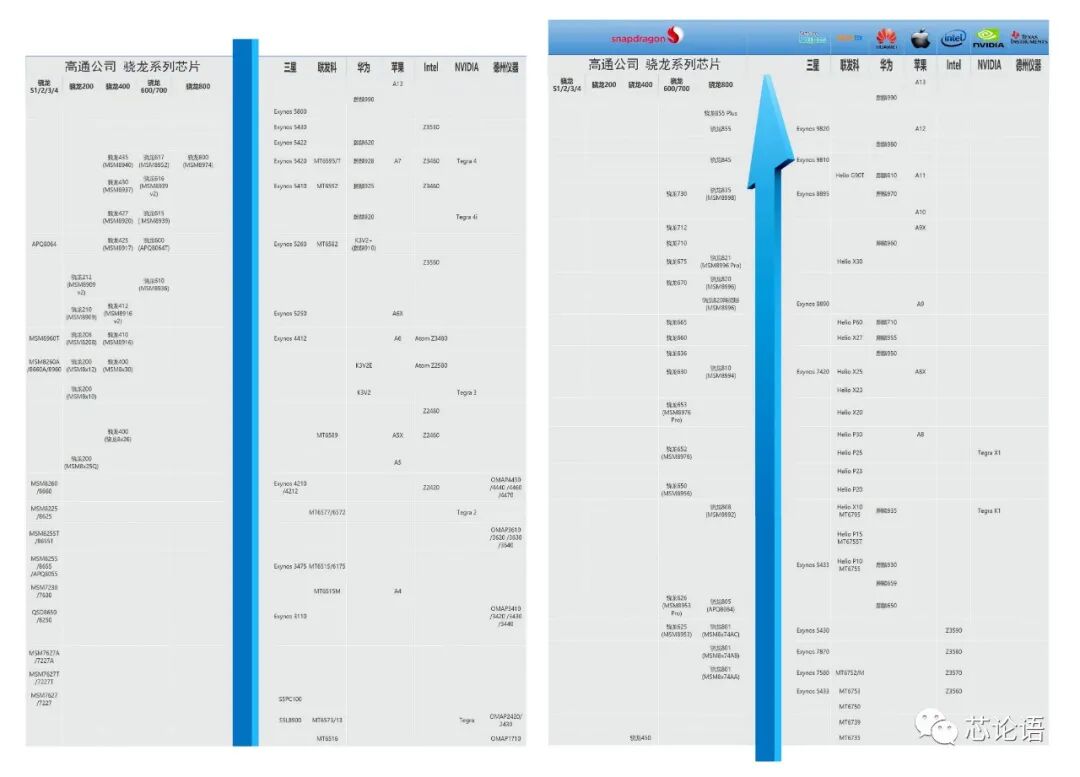 Figure 53. Qualcomm (left) and other companies (right) smartphone SoC chip ladder chart (Source: Internet Image)In 2008, the demonstration effect of Apple’s smartphones led to an explosion in the application of multi-touch and fingerprint technology. After the launch of Apple iPhone series smartphones, iPads, and other mobile terminal products, a “multi-touch storm” swept the globe, making multi-touch technology the preferred user interface for various smartphones, LCD TVs, laptops, MID/PMP, and various electronic systems, leading to a surge in capacitive touch chip and fingerprint chip companies.AuthenTec was acquired by Apple in 2012. Validity was acquired by Synaptics in 2013, and its chips are now mainly used in products like HTC One Max and Samsung Galaxy S5.
Figure 53. Qualcomm (left) and other companies (right) smartphone SoC chip ladder chart (Source: Internet Image)In 2008, the demonstration effect of Apple’s smartphones led to an explosion in the application of multi-touch and fingerprint technology. After the launch of Apple iPhone series smartphones, iPads, and other mobile terminal products, a “multi-touch storm” swept the globe, making multi-touch technology the preferred user interface for various smartphones, LCD TVs, laptops, MID/PMP, and various electronic systems, leading to a surge in capacitive touch chip and fingerprint chip companies.AuthenTec was acquired by Apple in 2012. Validity was acquired by Synaptics in 2013, and its chips are now mainly used in products like HTC One Max and Samsung Galaxy S5.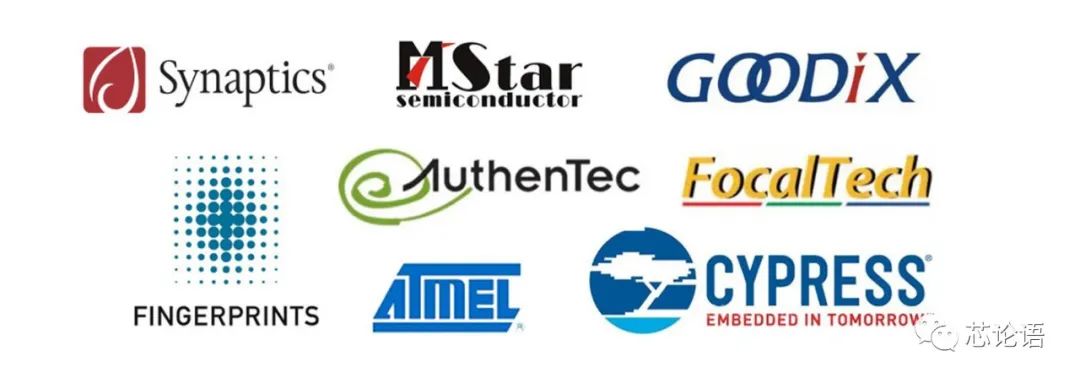 Figure 54. Major global suppliers of touch and fingerprint chipsIn 2009, Goodix Technology launched the first ten-point touch chip, becoming the first domestic manufacturer to produce a ten-point touch chip outside of Apple. The first mobile manufacturer to adopt Goodix’s solution was the BoGuang company.In 2011, MediaTek (MTK) invested in Goodix Technology. The strong alliance with MTK enabled Goodix Technology to soar with the tailwind of the mobile internet. Goodix Technology provided affordable touch product support for rapidly growing domestic smartphone manufacturers, leading to explosive growth in the company’s performance, with profits increasing from 26.52 million yuan in 2011 to 225 million yuan in 2012, nearly a tenfold increase.
Figure 54. Major global suppliers of touch and fingerprint chipsIn 2009, Goodix Technology launched the first ten-point touch chip, becoming the first domestic manufacturer to produce a ten-point touch chip outside of Apple. The first mobile manufacturer to adopt Goodix’s solution was the BoGuang company.In 2011, MediaTek (MTK) invested in Goodix Technology. The strong alliance with MTK enabled Goodix Technology to soar with the tailwind of the mobile internet. Goodix Technology provided affordable touch product support for rapidly growing domestic smartphone manufacturers, leading to explosive growth in the company’s performance, with profits increasing from 26.52 million yuan in 2011 to 225 million yuan in 2012, nearly a tenfold increase. Figure 55. Goodix Technology Chairman Zhang Fan and the miracle of the company’s soaring performance (Source: Internet Image)In 2013, after Apple released a phone with fingerprint recognition capabilities, fingerprint recognition was ready to dominate the mobile recognition market.In 2014, Goodix Technology launched a fingerprint touch product prototype, officially entering the fingerprint recognition industry. Unlike European and American companies that generally use high-voltage drive, Goodix adopted a low-voltage drive method. In November of the same year, Meizu MX4 Pro was released, equipped with Goodix’s front-press fingerprint recognition, marking a revolutionary product in the history of domestic smartphones, breaking Touch ID’s monopoly on front-press fingerprint recognition and FPC’s monopoly, bringing another possibility and choice to the industry.
Figure 55. Goodix Technology Chairman Zhang Fan and the miracle of the company’s soaring performance (Source: Internet Image)In 2013, after Apple released a phone with fingerprint recognition capabilities, fingerprint recognition was ready to dominate the mobile recognition market.In 2014, Goodix Technology launched a fingerprint touch product prototype, officially entering the fingerprint recognition industry. Unlike European and American companies that generally use high-voltage drive, Goodix adopted a low-voltage drive method. In November of the same year, Meizu MX4 Pro was released, equipped with Goodix’s front-press fingerprint recognition, marking a revolutionary product in the history of domestic smartphones, breaking Touch ID’s monopoly on front-press fingerprint recognition and FPC’s monopoly, bringing another possibility and choice to the industry.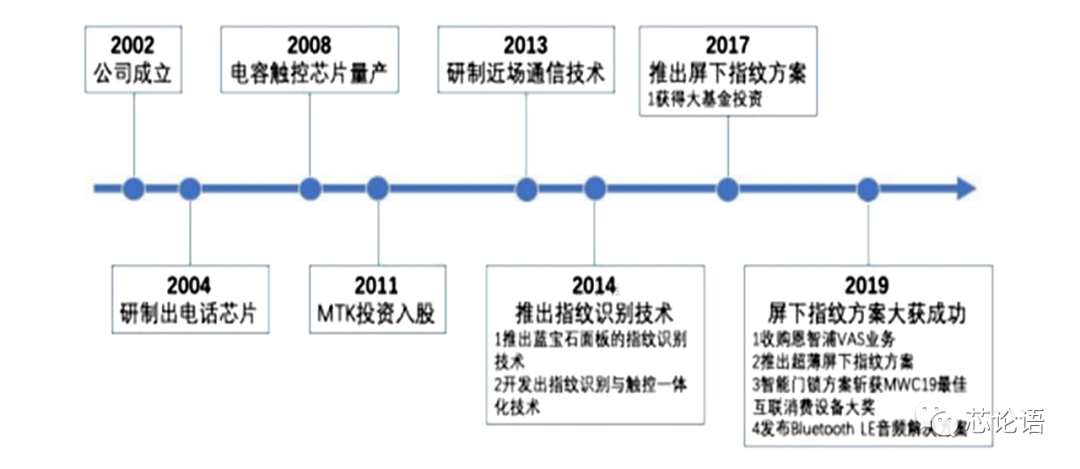 Figure 56. Development history of Goodix Technology (Source: Reference Material 8)In 2015, FPC almost monopolized the Android fingerprint chip market. By 2016, domestic manufacturers had reclaimed a significant portion of the fingerprint chip market, but FPC still held the largest share of 40% in the fingerprint chips of the Android phone ecosystem.
Figure 56. Development history of Goodix Technology (Source: Reference Material 8)In 2015, FPC almost monopolized the Android fingerprint chip market. By 2016, domestic manufacturers had reclaimed a significant portion of the fingerprint chip market, but FPC still held the largest share of 40% in the fingerprint chips of the Android phone ecosystem.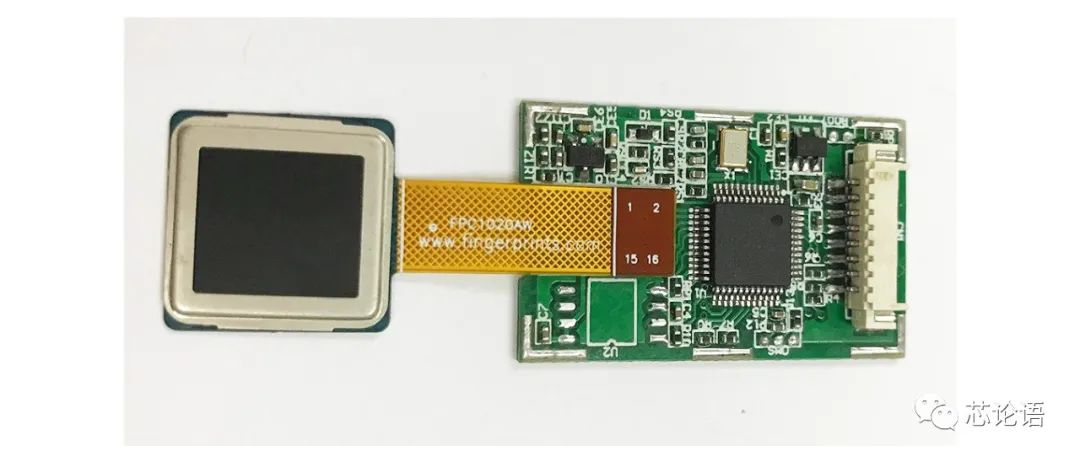 Figure 57. FPC’s capacitive optical fingerprint module FPC1020AM (Source: Internet Image)In 2017, Goodix Technology’s fingerprint recognition chip price dropped to around 10 yuan, and Huawei eliminated FPC, choosing Goodix’s products for its flagship new phone P10. Goodix’s fingerprint recognition chip used in Huawei’s P10 was a milestone. In mid-to-high-end mainstream Android brands, Goodix broke FPC’s monopoly. In 2018, Goodix launched under-display fingerprint chips. The Vivo X21 phone released in Wuzhen and Samsung’s Galaxy J7 Duo launched in India both adopted Goodix’s under-display fingerprint solution.
Figure 57. FPC’s capacitive optical fingerprint module FPC1020AM (Source: Internet Image)In 2017, Goodix Technology’s fingerprint recognition chip price dropped to around 10 yuan, and Huawei eliminated FPC, choosing Goodix’s products for its flagship new phone P10. Goodix’s fingerprint recognition chip used in Huawei’s P10 was a milestone. In mid-to-high-end mainstream Android brands, Goodix broke FPC’s monopoly. In 2018, Goodix launched under-display fingerprint chips. The Vivo X21 phone released in Wuzhen and Samsung’s Galaxy J7 Duo launched in India both adopted Goodix’s under-display fingerprint solution.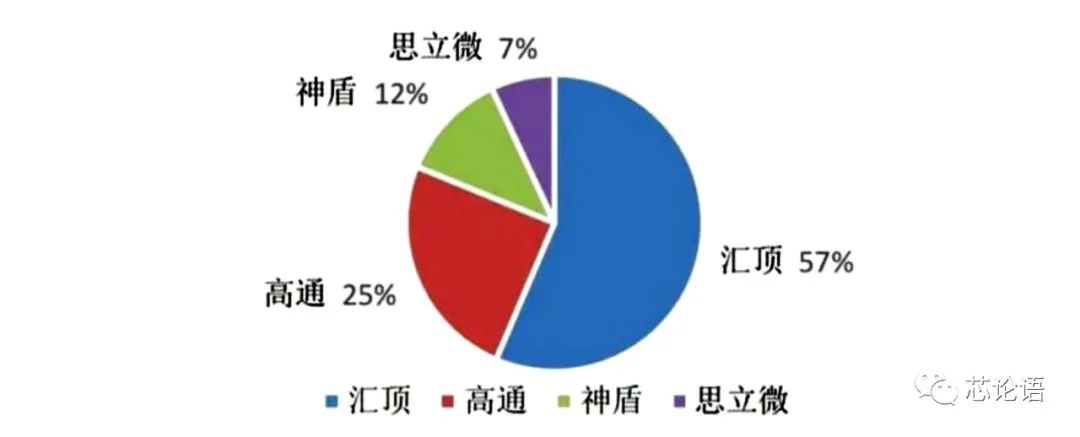 Figure 58. Global shipment share of under-display fingerprint chip manufacturers in 2019 (Source: Reference Material 7)10. Mobile terminals have high requirements for chips, promoting chip technology innovationMobile terminals pursue extreme lightness, thinness, shortness, and smallness, generally integrating as many peripheral interface circuits and central processing units (CPUs) as possible into a single chip, forming what is known as a system on chip (SoC). For example, smartphones, smart speakers, car navigation systems, and smart home appliances all use SoC chips. Mobile terminal chips are produced in large quantities and have complex functions, requiring dimensions to be as small and thin as possible and power consumption to be minimized, which poses high demands on chip design, manufacturing, and packaging. Advanced manufacturing processes, multi-core CPUs, low-power designs, 3D manufacturing, and stacked packaging technologies are all critically important in mobile terminal chips.
Figure 58. Global shipment share of under-display fingerprint chip manufacturers in 2019 (Source: Reference Material 7)10. Mobile terminals have high requirements for chips, promoting chip technology innovationMobile terminals pursue extreme lightness, thinness, shortness, and smallness, generally integrating as many peripheral interface circuits and central processing units (CPUs) as possible into a single chip, forming what is known as a system on chip (SoC). For example, smartphones, smart speakers, car navigation systems, and smart home appliances all use SoC chips. Mobile terminal chips are produced in large quantities and have complex functions, requiring dimensions to be as small and thin as possible and power consumption to be minimized, which poses high demands on chip design, manufacturing, and packaging. Advanced manufacturing processes, multi-core CPUs, low-power designs, 3D manufacturing, and stacked packaging technologies are all critically important in mobile terminal chips.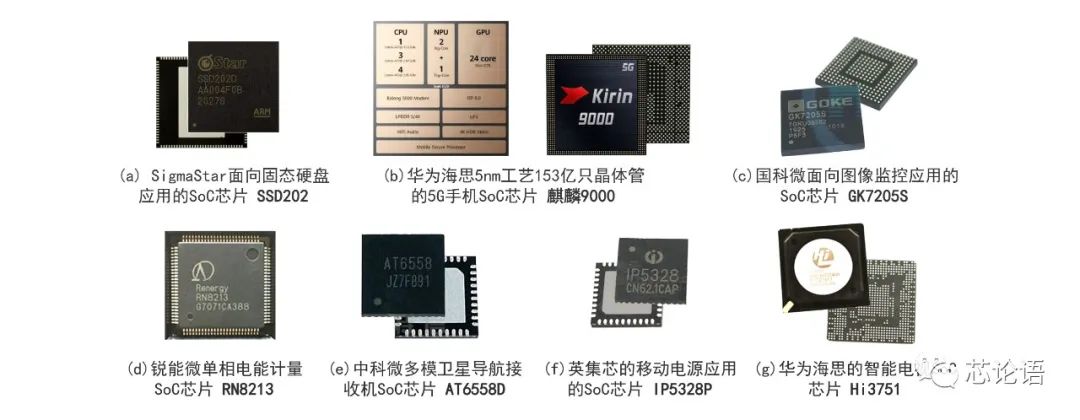 Figure 59. Examples of application-oriented SoC chipsChip technology development according to Moore’s Law is a reality and an urgent need. The integration of chips doubles and performance improves in less than two years, which is the development law predicted by Moore’s Law. The demand for improvements in chip integration and functionality is also a realistic and urgent requirement from the desktop internet and mobile internet eras. After entering the 14nm process node, the difficulty of lithography technology has sharply increased. The price of ASML’s EUV lithography machine has reached $120 million, with lithography equipment costs accounting for 35% of all manufacturing equipment costs, and lithography processes accounting for about 40% of all manufacturing hours. Lithography technology has become the soul technology of chip manufacturing, and lithography machines have become the bottleneck equipment of chip technology.
Figure 59. Examples of application-oriented SoC chipsChip technology development according to Moore’s Law is a reality and an urgent need. The integration of chips doubles and performance improves in less than two years, which is the development law predicted by Moore’s Law. The demand for improvements in chip integration and functionality is also a realistic and urgent requirement from the desktop internet and mobile internet eras. After entering the 14nm process node, the difficulty of lithography technology has sharply increased. The price of ASML’s EUV lithography machine has reached $120 million, with lithography equipment costs accounting for 35% of all manufacturing equipment costs, and lithography processes accounting for about 40% of all manufacturing hours. Lithography technology has become the soul technology of chip manufacturing, and lithography machines have become the bottleneck equipment of chip technology.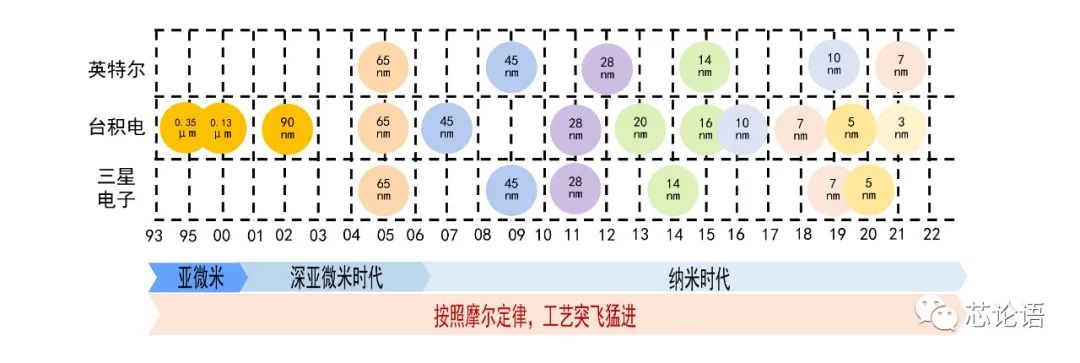 Figure 60. Evolution timeline of chip manufacturing processes along Moore’s Law (Source: Internet Image)In 2014, Huawei HiSilicon launched its first mobile SoC chip, Kirin 910. It used the then-mainstream 28nm HPM process, making its debut in the mobile SoC chip market. In June of the same year, Huawei HiSilicon released Kirin 920, which was the world’s first commercial LTE Cat.6, adopting the industry’s most advanced 4xA15 + 4xA7 octa-core SoC heterogeneous architecture, with very strong performance, meeting user demands for high-speed internet experience during the transition from 3G to 4G. The Honor 6, Honor 6 Plus, and Mate 7 equipped with Kirin 920 became legendary devices.In 2015, Samsung’s flagship product Galaxy S6 abandoned Qualcomm’s mobile chips and adopted Samsung Semiconductor’s self-developed Exynos 7420 mobile chip. In February 2011, Samsung Semiconductor officially named its processor brand Exynos, which is a combination of two Greek words, Exypnos and Prasinos, representing “intelligent” and “environmentally friendly”. The Exynos series processors are mainly used in mobile terminals such as smartphones and tablets.
Figure 60. Evolution timeline of chip manufacturing processes along Moore’s Law (Source: Internet Image)In 2014, Huawei HiSilicon launched its first mobile SoC chip, Kirin 910. It used the then-mainstream 28nm HPM process, making its debut in the mobile SoC chip market. In June of the same year, Huawei HiSilicon released Kirin 920, which was the world’s first commercial LTE Cat.6, adopting the industry’s most advanced 4xA15 + 4xA7 octa-core SoC heterogeneous architecture, with very strong performance, meeting user demands for high-speed internet experience during the transition from 3G to 4G. The Honor 6, Honor 6 Plus, and Mate 7 equipped with Kirin 920 became legendary devices.In 2015, Samsung’s flagship product Galaxy S6 abandoned Qualcomm’s mobile chips and adopted Samsung Semiconductor’s self-developed Exynos 7420 mobile chip. In February 2011, Samsung Semiconductor officially named its processor brand Exynos, which is a combination of two Greek words, Exypnos and Prasinos, representing “intelligent” and “environmentally friendly”. The Exynos series processors are mainly used in mobile terminals such as smartphones and tablets.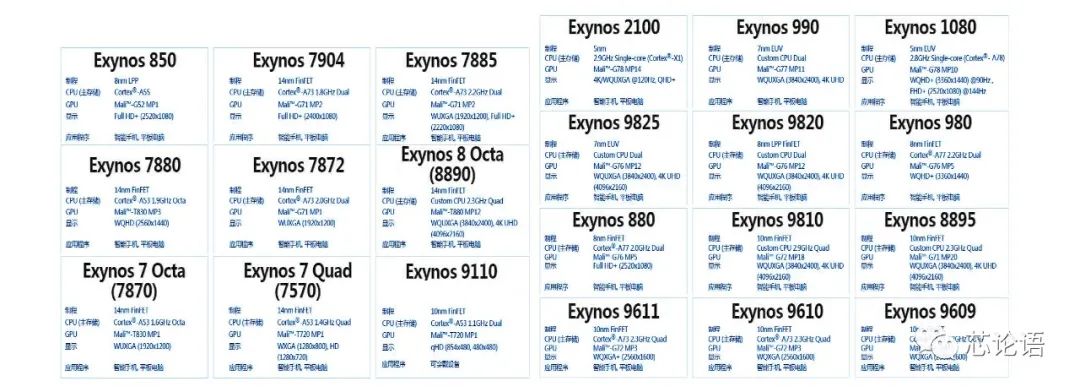 Figure 61. Samsung Semiconductor’s latest mobile processor chips from 14nm to 5nm (Source: Samsung Semiconductor Official Website)In 2016, Huawei HiSilicon launched Kirin 960. This chip’s overall performance reached the industry’s top level, officially entering the top-tier mobile chip market. Huawei HiSilicon’s mobile chips formed a tripartite competition with Qualcomm and Apple. The Mate 9 series, P10 series, Honor 9, and Honor V9 equipped with Kirin 960 achieved great success in the market. In 2017, Huawei HiSilicon released Kirin 970, which integrated an artificial intelligence computing platform NPU into the SoC for the first time, pioneering the edge AI industry.In July 2017, Yangtze Memory Technologies successfully developed China’s first 3D NAND flash chip. In the third quarter of 2018, 32-layer products achieved mass production. In the third quarter of 2019, 64-layer products achieved mass production. It has now announced the successful development of a series of 128-layer 3D NAND flash chips. The rapid development of Yangtze Memory’s 3D NAND flash technology is attributed to its unique XtackingTM technology, which separates the storage array (Cell Array) and peripheral control circuits (Periphery) for manufacturing and then combines them for packaging.
Figure 61. Samsung Semiconductor’s latest mobile processor chips from 14nm to 5nm (Source: Samsung Semiconductor Official Website)In 2016, Huawei HiSilicon launched Kirin 960. This chip’s overall performance reached the industry’s top level, officially entering the top-tier mobile chip market. Huawei HiSilicon’s mobile chips formed a tripartite competition with Qualcomm and Apple. The Mate 9 series, P10 series, Honor 9, and Honor V9 equipped with Kirin 960 achieved great success in the market. In 2017, Huawei HiSilicon released Kirin 970, which integrated an artificial intelligence computing platform NPU into the SoC for the first time, pioneering the edge AI industry.In July 2017, Yangtze Memory Technologies successfully developed China’s first 3D NAND flash chip. In the third quarter of 2018, 32-layer products achieved mass production. In the third quarter of 2019, 64-layer products achieved mass production. It has now announced the successful development of a series of 128-layer 3D NAND flash chips. The rapid development of Yangtze Memory’s 3D NAND flash technology is attributed to its unique XtackingTM technology, which separates the storage array (Cell Array) and peripheral control circuits (Periphery) for manufacturing and then combines them for packaging.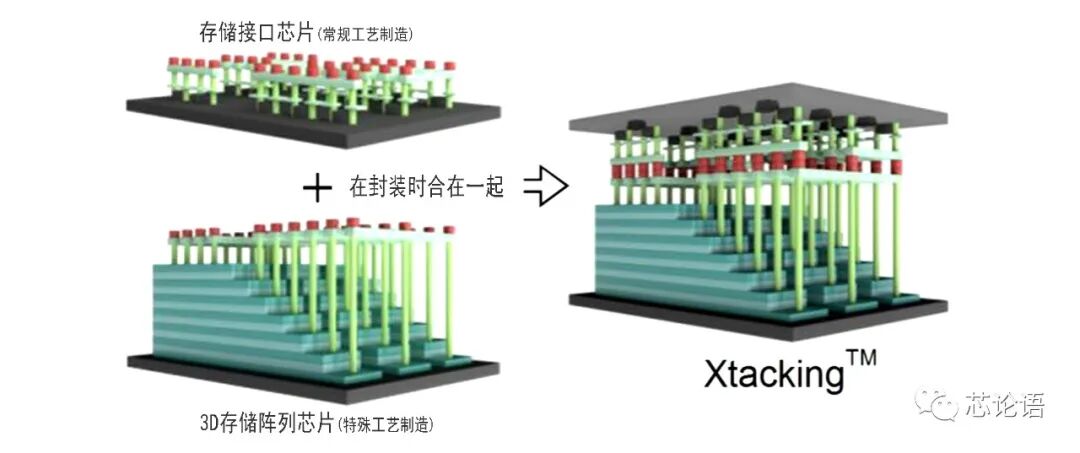 Figure 62. Yangtze Memory’s XtackingTM technology (Source: Internet Image)In 2019, Huawei HiSilicon released the latest generation of flagship mobile chips, the Kirin 990 series, including Kirin 990 and Kirin 990 5G. The Kirin 990 processor is manufactured using TSMC’s second-generation 7nm process, with the biggest highlight being the built-in Balong 5000 baseband, enabling true 5G internet access.
Figure 62. Yangtze Memory’s XtackingTM technology (Source: Internet Image)In 2019, Huawei HiSilicon released the latest generation of flagship mobile chips, the Kirin 990 series, including Kirin 990 and Kirin 990 5G. The Kirin 990 processor is manufactured using TSMC’s second-generation 7nm process, with the biggest highlight being the built-in Balong 5000 baseband, enabling true 5G internet access.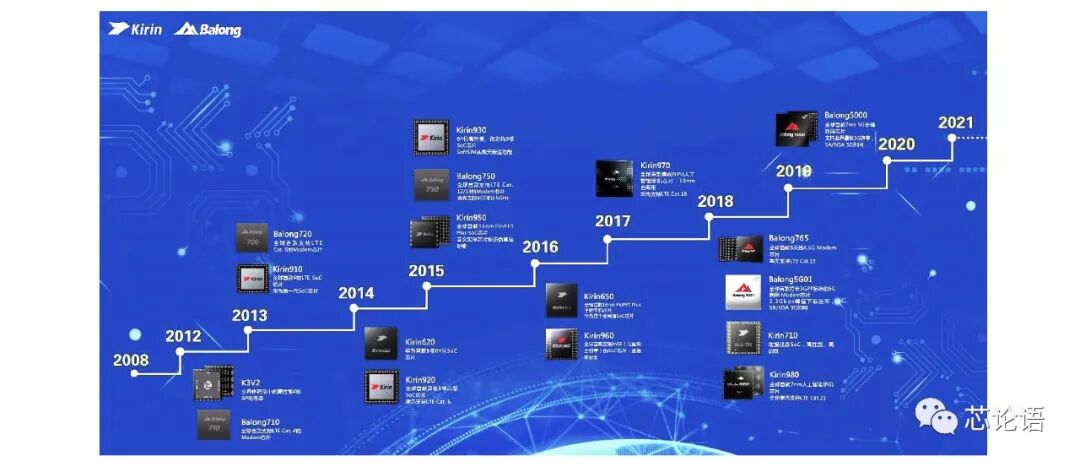 Figure 63. Huawei HiSilicon mobile SoC chip development timeline (Source: Reference Material 9)In 2020, Micron’s 176-layer 3D NAND Flash began mass production. It adopted a design that fused two 88-layer structures (stacking 512Gbit TLC flash). This chip technology switched to a charge trap storage unit scheme, significantly reducing the thickness of each layer. Currently, the thickness of the 176-layer bare chip is only 45μm, the same as Micron’s 64-layer floating gate 3D NAND. The thickness of the 16-layer bare chip stacked packaging is less than 1.5 mm, suitable for most mobile/storage card usage scenarios.
Figure 63. Huawei HiSilicon mobile SoC chip development timeline (Source: Reference Material 9)In 2020, Micron’s 176-layer 3D NAND Flash began mass production. It adopted a design that fused two 88-layer structures (stacking 512Gbit TLC flash). This chip technology switched to a charge trap storage unit scheme, significantly reducing the thickness of each layer. Currently, the thickness of the 176-layer bare chip is only 45μm, the same as Micron’s 64-layer floating gate 3D NAND. The thickness of the 16-layer bare chip stacked packaging is less than 1.5 mm, suitable for most mobile/storage card usage scenarios.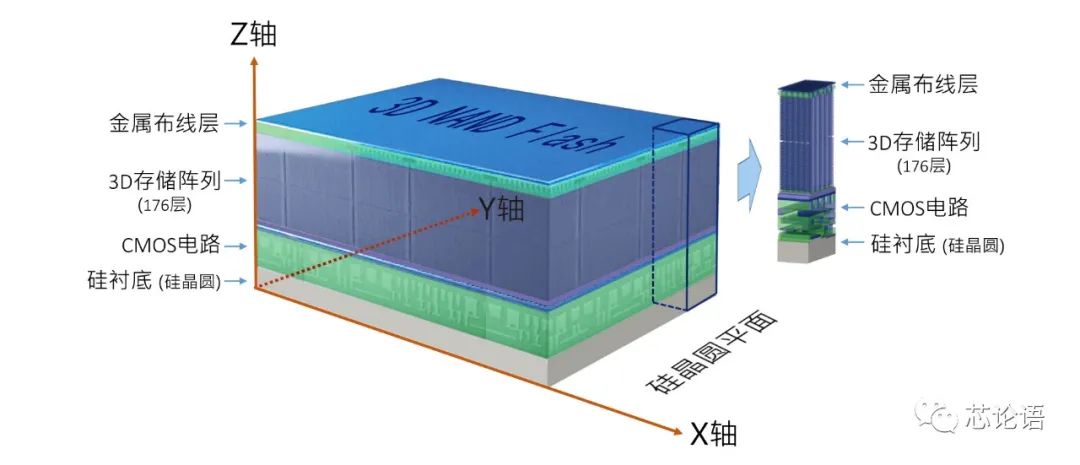 Figure 64. Structure diagram of Micron’s 176-layer 3D NAND Flash (Source: Compiled from Internet Images)In October 2020, Huawei released the Kirin 9000 mobile SoC chip based on a 5nm process. This chip integrates 8 CPU cores, 3 NPU cores, and a 24-core GPU, using a 5nm manufacturing process, integrating 15.3 billion transistors. In performance tests, it significantly outperformed MediaTek’s strongest 5G mobile chip, the Dimensity 2000.Unfortunately, due to the multi-layered precision strikes by the United States against China’s chip industry chain, Huawei’s high-end smartphone chip production channels have been blocked, making the high-end chips designed by Huawei HiSilicon unable to be produced. The Huawei flagship phone Mate40 series equipped with Kirin 9000 may become a rare edition.
Figure 64. Structure diagram of Micron’s 176-layer 3D NAND Flash (Source: Compiled from Internet Images)In October 2020, Huawei released the Kirin 9000 mobile SoC chip based on a 5nm process. This chip integrates 8 CPU cores, 3 NPU cores, and a 24-core GPU, using a 5nm manufacturing process, integrating 15.3 billion transistors. In performance tests, it significantly outperformed MediaTek’s strongest 5G mobile chip, the Dimensity 2000.Unfortunately, due to the multi-layered precision strikes by the United States against China’s chip industry chain, Huawei’s high-end smartphone chip production channels have been blocked, making the high-end chips designed by Huawei HiSilicon unable to be produced. The Huawei flagship phone Mate40 series equipped with Kirin 9000 may become a rare edition.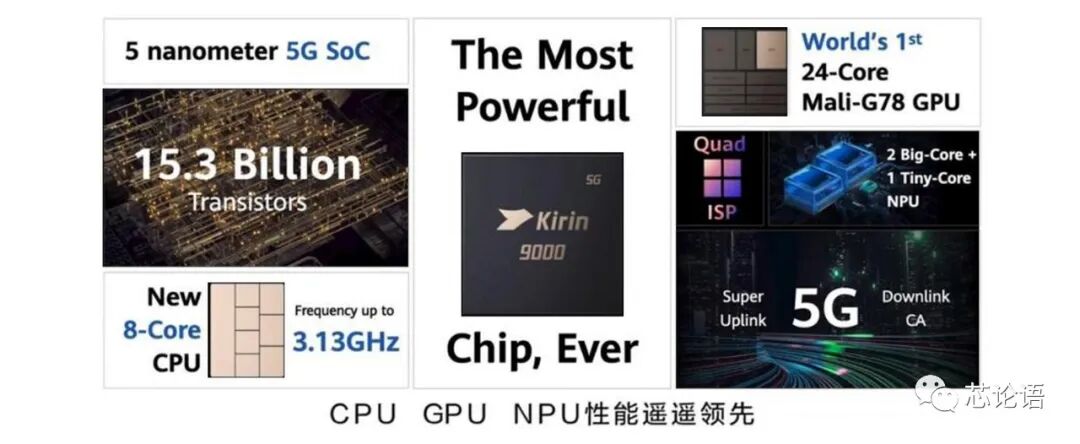 Figure 65. Huawei HiSilicon’s strongest 5G mobile chip Kirin 9000 (Source: Internet Image)In November 2020, Apple launched the MacBook Air, Pro, and mini equipped with its self-developed M1 processor chip. The M1 is an 8-core SoC chip developed based on the ARM architecture, featuring 4 high-performance Firestorm CPU cores and 4 high-efficiency Icestorm CPU cores, as well as an 8-core GPU. The M1 is manufactured using a 5nm process, integrating approximately 16 billion transistors on a chip of about 120mm².
Figure 65. Huawei HiSilicon’s strongest 5G mobile chip Kirin 9000 (Source: Internet Image)In November 2020, Apple launched the MacBook Air, Pro, and mini equipped with its self-developed M1 processor chip. The M1 is an 8-core SoC chip developed based on the ARM architecture, featuring 4 high-performance Firestorm CPU cores and 4 high-efficiency Icestorm CPU cores, as well as an 8-core GPU. The M1 is manufactured using a 5nm process, integrating approximately 16 billion transistors on a chip of about 120mm².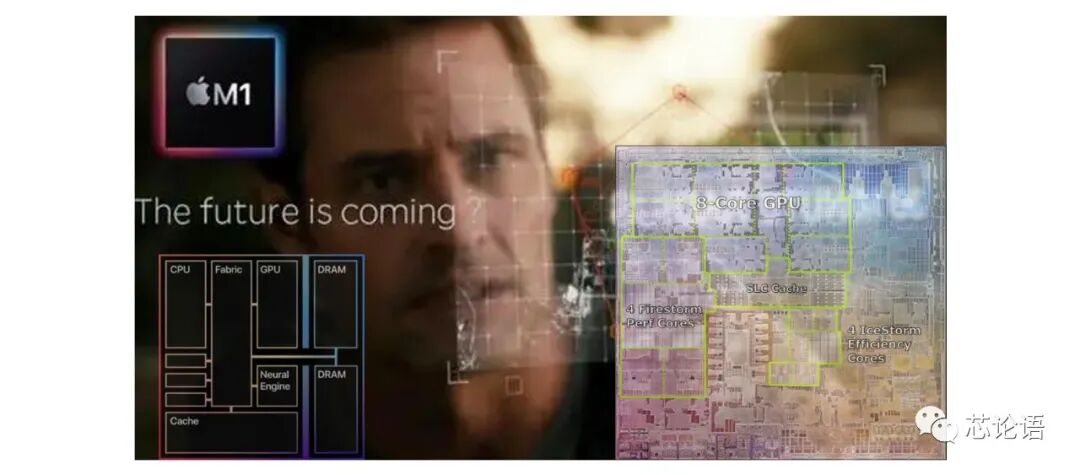 Figure 66. Apple’s self-developed Mac computer processor chip Apple M1 (Source: Internet Image)Apple’s computer processors have undergone four CPU architecture migrations. The first was in 1984, when the CPU transitioned from the original MOS Technology 6502 processor to the Motorola 68000 processor; the second was in 1994, when the CPU switched to the IBM PowerPC processor; the third was in 2005, when Jobs announced the adoption of Intel X86 processors. Now, the fourth migration has occurred, as Apple has abandoned Intel X86 processors and will now use its self-developed processors based on ARM architecture.In 2020, domestic CPU manufacturer Phytium released a multi-core CPU chip for server applications – the Tianyun S2500. This chip is manufactured using a 16nm process, with a chip area of 400mm2, capable of configuring up to 64 FTC663 architecture CPU cores, with a frequency of 2.0 to 2.2GHz, a 64MB L3 cache, supporting eight-channel DDR4 memory, providing 800Gbps bandwidth with four direct connection ports, supporting 2 to 8-way parallelism, and a single system can provide configurations of 128 to 512 CPU cores, with a thermal design power of 150W. Fifteen domestic manufacturers, including Great Wall, Inspur, Tongfang, Sugon, and ZTE, also released their multi-way server products based on the Tianyun S2500, achieving significant breakthroughs in software ecosystem development.
Figure 66. Apple’s self-developed Mac computer processor chip Apple M1 (Source: Internet Image)Apple’s computer processors have undergone four CPU architecture migrations. The first was in 1984, when the CPU transitioned from the original MOS Technology 6502 processor to the Motorola 68000 processor; the second was in 1994, when the CPU switched to the IBM PowerPC processor; the third was in 2005, when Jobs announced the adoption of Intel X86 processors. Now, the fourth migration has occurred, as Apple has abandoned Intel X86 processors and will now use its self-developed processors based on ARM architecture.In 2020, domestic CPU manufacturer Phytium released a multi-core CPU chip for server applications – the Tianyun S2500. This chip is manufactured using a 16nm process, with a chip area of 400mm2, capable of configuring up to 64 FTC663 architecture CPU cores, with a frequency of 2.0 to 2.2GHz, a 64MB L3 cache, supporting eight-channel DDR4 memory, providing 800Gbps bandwidth with four direct connection ports, supporting 2 to 8-way parallelism, and a single system can provide configurations of 128 to 512 CPU cores, with a thermal design power of 150W. Fifteen domestic manufacturers, including Great Wall, Inspur, Tongfang, Sugon, and ZTE, also released their multi-way server products based on the Tianyun S2500, achieving significant breakthroughs in software ecosystem development.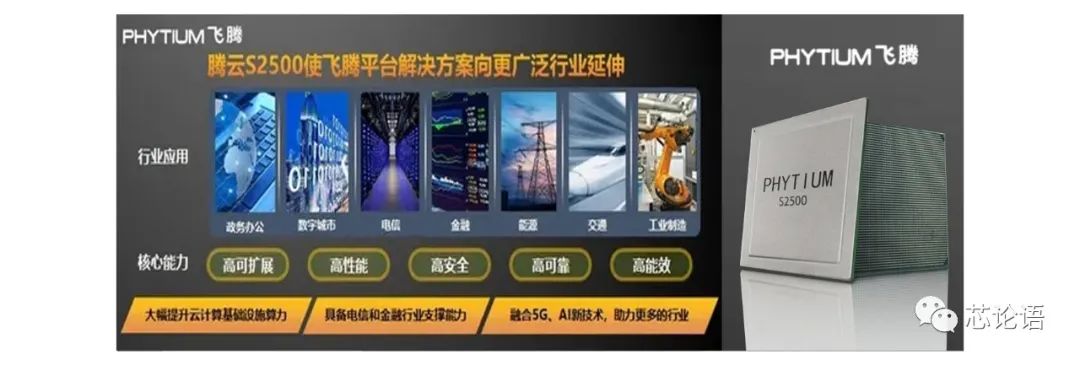 Figure 67. Phytium’s 64-core CPU chip Tianyun S2500 (Source: Internet Image)In November 2020, Samsung Semiconductor released the flagship chip Exynos 1080. It uses a 5nm process and the latest ARM CPU architecture Cortex-A78, as well as the latest GPU architecture Mali-G78. This is the first time Samsung Semiconductor has released a chip product in China, and this chip is designed specifically for the Chinese market, with Vivo set to launch a new product equipped with this chip.
Figure 67. Phytium’s 64-core CPU chip Tianyun S2500 (Source: Internet Image)In November 2020, Samsung Semiconductor released the flagship chip Exynos 1080. It uses a 5nm process and the latest ARM CPU architecture Cortex-A78, as well as the latest GPU architecture Mali-G78. This is the first time Samsung Semiconductor has released a chip product in China, and this chip is designed specifically for the Chinese market, with Vivo set to launch a new product equipped with this chip.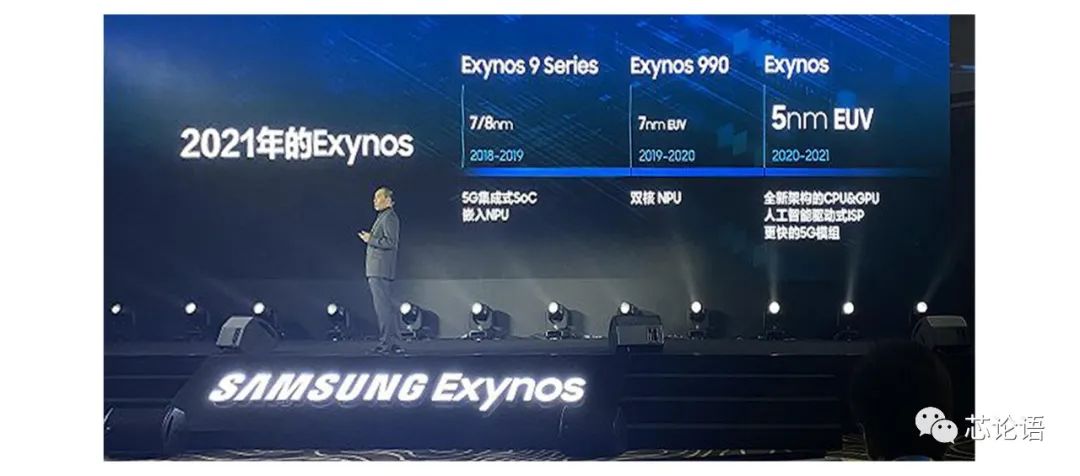 Figure 68. Samsung Semiconductor flagship mobile SoC chip launch event (Source: Internet Image)In June 2021, at the Huawei HarmonyOS launch event, Huawei Consumer Business CEO Yu Chengdong announced news about the Huawei P50 series. Due to well-known reasons, Huawei did not announce the launch time of the P50 series.In July 2021, online articles revealed that the upcoming Huawei P50 series will have three chip versions: one is the 4G version with Qualcomm Snapdragon 888 4G chip, one is the Huawei HiSilicon Kirin 9000L 4G chip version, and one is the Huawei HiSilicon Kirin 9000 5G chip version. It is said that Huawei only prepared a little over 3 million units for the 4G version, while the Kirin 9000 5G version has even fewer, only over 300,000 units. With the support of Huawei’s HarmonyOS, it is believed that future sales will exceed supply.
Figure 68. Samsung Semiconductor flagship mobile SoC chip launch event (Source: Internet Image)In June 2021, at the Huawei HarmonyOS launch event, Huawei Consumer Business CEO Yu Chengdong announced news about the Huawei P50 series. Due to well-known reasons, Huawei did not announce the launch time of the P50 series.In July 2021, online articles revealed that the upcoming Huawei P50 series will have three chip versions: one is the 4G version with Qualcomm Snapdragon 888 4G chip, one is the Huawei HiSilicon Kirin 9000L 4G chip version, and one is the Huawei HiSilicon Kirin 9000 5G chip version. It is said that Huawei only prepared a little over 3 million units for the 4G version, while the Kirin 9000 5G version has even fewer, only over 300,000 units. With the support of Huawei’s HarmonyOS, it is believed that future sales will exceed supply.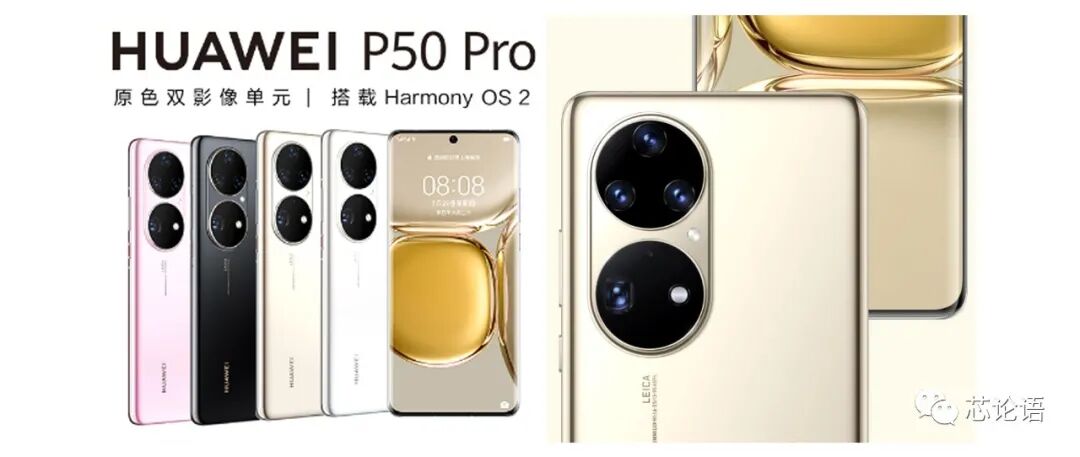 Figure 69. Pre-sale website exposes real images of Huawei P50 Pro (Source: Internet Image)In the post-Moore era, advanced packaging technology has taken over the baton from process miniaturization, FinFET, and 3D integration technology, continuing the vitality of Moore’s Law. After 2020, as chip processes advance below 7nm, design, manufacturing, and packaging costs become extremely high. Packaging technology has matured since 2000. Many advanced packaging technologies have moved many chip integration technologies and processes into packaging, continuing to write the legend of microelectronics and integrated circuit technology pursuing “small yet powerful”. Currently, there are dozens of types of advanced packaging technologies, allowing flexible selection of chip packaging to meet different needs.Currently, the main advanced packaging technologies include: WLP, FIWLP, FOWLP, eWLB, CSP, WLCSP, CoW, WoW, FOPLP, InFO, CoWoS, HBM, HMC, Wide-IO, EMIB, Foveros, Co-EMIB, ODI, 3D IC, SoIC, X-Cube, SiP, etc.
Figure 69. Pre-sale website exposes real images of Huawei P50 Pro (Source: Internet Image)In the post-Moore era, advanced packaging technology has taken over the baton from process miniaturization, FinFET, and 3D integration technology, continuing the vitality of Moore’s Law. After 2020, as chip processes advance below 7nm, design, manufacturing, and packaging costs become extremely high. Packaging technology has matured since 2000. Many advanced packaging technologies have moved many chip integration technologies and processes into packaging, continuing to write the legend of microelectronics and integrated circuit technology pursuing “small yet powerful”. Currently, there are dozens of types of advanced packaging technologies, allowing flexible selection of chip packaging to meet different needs.Currently, the main advanced packaging technologies include: WLP, FIWLP, FOWLP, eWLB, CSP, WLCSP, CoW, WoW, FOPLP, InFO, CoWoS, HBM, HMC, Wide-IO, EMIB, Foveros, Co-EMIB, ODI, 3D IC, SoIC, X-Cube, SiP, etc.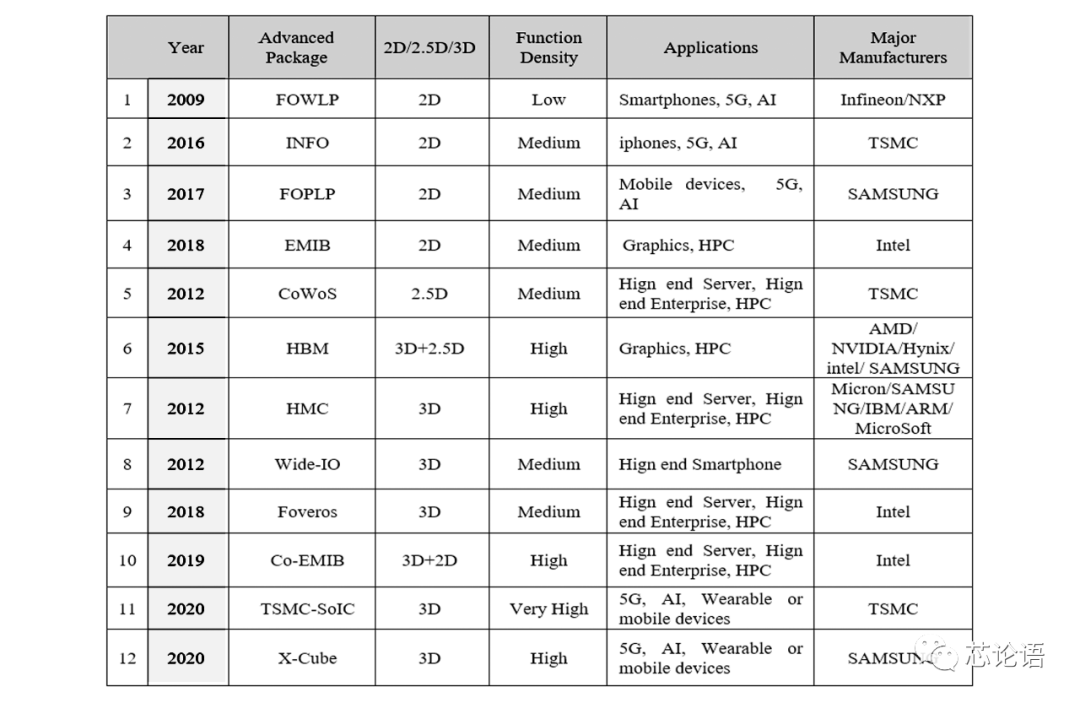 Figure 70. Timeline of 12 mainstream advanced packaging technologies (Source: Reference Material 15)
Figure 70. Timeline of 12 mainstream advanced packaging technologies (Source: Reference Material 15)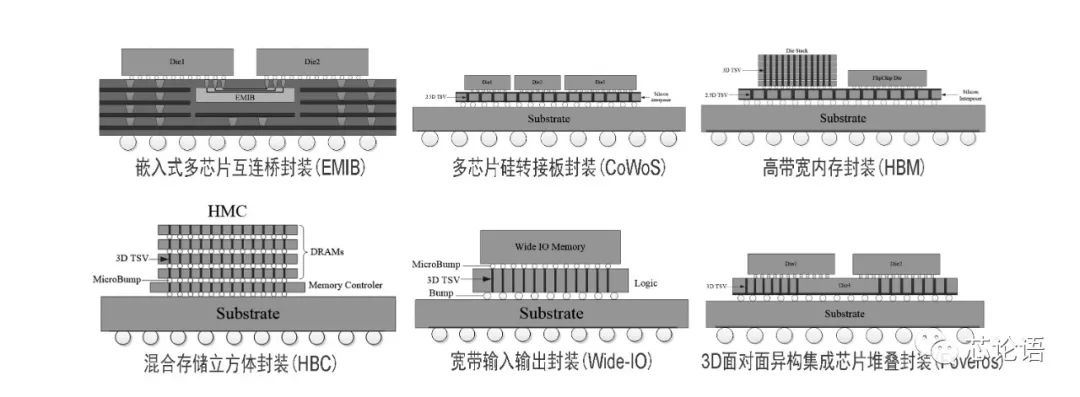 Figure 71. Illustrations of several advanced packaging technologies (Source: Reference Material 15)11. Reflecting on 60 years of development history, sorting out milestone events in chip technologyChip technology is the result of long-term accumulation of human wisdom, but at critical moments, an important invention or creation can change the direction of chip technology development. Moreover, when chip technology advances along a certain path, it must continuously tackle technical challenges and innovate to meet practical application needs, striving to overcome various difficulties on the technical road. These important technological inventions, creations, and breakthroughs are all milestones in the development of chip technology.
Figure 71. Illustrations of several advanced packaging technologies (Source: Reference Material 15)11. Reflecting on 60 years of development history, sorting out milestone events in chip technologyChip technology is the result of long-term accumulation of human wisdom, but at critical moments, an important invention or creation can change the direction of chip technology development. Moreover, when chip technology advances along a certain path, it must continuously tackle technical challenges and innovate to meet practical application needs, striving to overcome various difficulties on the technical road. These important technological inventions, creations, and breakthroughs are all milestones in the development of chip technology.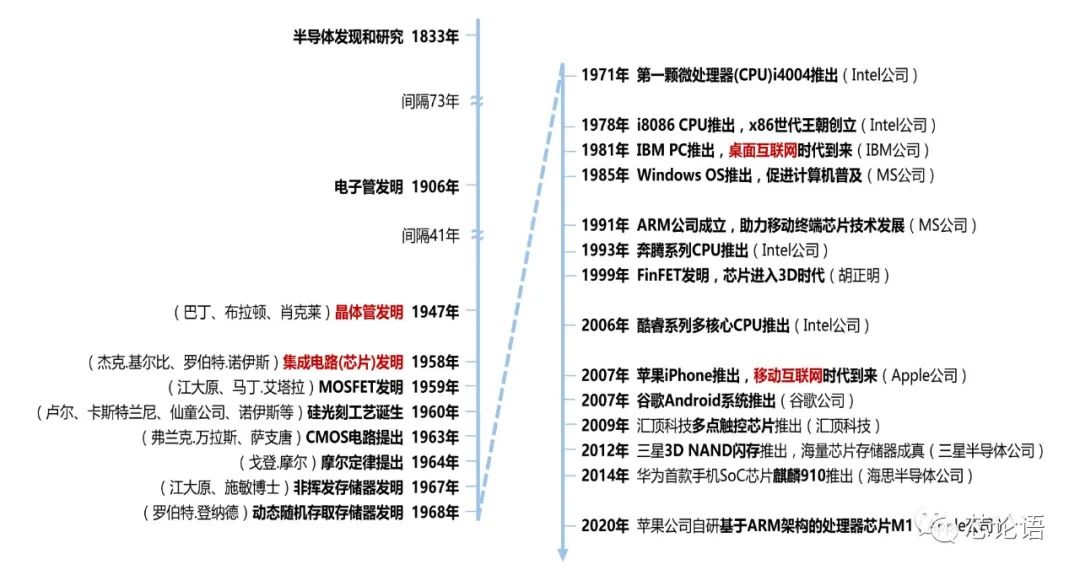 Figure 72. Milestones in the development of chip technology
Figure 72. Milestones in the development of chip technology
From 1833 to 1947, the invention of the transistor can be seen as the budding period of chip technology; from 1947 to 1971, the launch of the microprocessor i4004 can be seen as the initial period of chip technology; from 1971 to 2007, the launch of the Apple iPhone can be seen as the growth period of chip technology driven by the desktop internet; from 2007 to the present, 14 years can be seen as the mature period of chip technology driven by the mobile internet. During this period, new technological inventions and innovations have emerged one after another, but due to the large number of events and short time intervals, and most of them are company inventions, they are the result of collective wisdom. Therefore, it is quite challenging to sort out milestone events since 2000. Additionally, since 2000, the Internet of Things, 5G communication, and artificial intelligence have also been some of the main lines driving the development of chip technology. This article does not cover these aspects for clarity.
Postscript: Entering the 21st century, humanity is in an era of explosive growth of information. In the field of chip technology, new technological innovations and important events are constantly occurring at different times and places, making it quite difficult to write a good history of chip technology development after 2000. If we roughly divide the development of chip technology into three movements, this article’s first part introduces the budding and initial periods of chip technology, the second part discusses the growth period of chip technology driven by the desktop internet, and this part discusses the mature period of chip technology driven by the mobile internet. Since 2000, the Internet of Things, 5G communication, and artificial intelligence have injected new momentum into chip technology and industry, with application, innovation, and competition being the inexhaustible driving forces for the development of chip technology and industry.
References:1. Electronic Enthusiasts, ARM’s New Architecture Performance Improvement Slows, Future Focus on Performance per Watt, Network: http://www.yidianzixun.com/article/0VoRScSH?appid=s3rd_op398&s=op398, 2021.7.152. Wei Rui, Talking about Mobile Processors – The Most Complex Chip in the World, Tencent: https://mp.weixin.qq.com/s/uIGh1RN3Gb6jvPjYwqEqwQ, 2021.7.263. felix86, iPhone Touchscreen, Network: http://fishnetvip.blog.chinaunix.net/uid-25985452-id-3072972.html, 2012.2.144. Hangzhou Jingxian, History of Touchscreen Development, Sohu: https://www.sohu.com/a/240330869_494129, 2018.7.105. Herbert Today Looks at Technology, In-depth Interpretation of “China Chip” Touch Control Chip Leader, JianShu: https://www.jianshu.com/p/9ee1fc674267, 2018.7.296. Wu Zipeng, How Fingerprint Recognition Manufacturers like Goodix/AuthenTec/FPC respond to the Full-Screen Phone Era? Eefocus: https://www.eefocus.com/sensor/392785, 2017.9.237. My Engineering, 100 Billion Valuation: The Development History of Goodix Technology, Personal Library: http://www.360doc.com/content/20/1026/13/40520079_942439075.shtml, 2020.10.268. Beike Investment Research, Revenue Increased 75 Times in Eight Years, How Did Goodix Technology Achieve This? Sina: https://t.cj.sina.com.cn/articles/view/7437683051/1bb52096b00100wot5?display=0&retcode=0, 2021.7.99. IoT Frontline Commentator, Behind the Kirin 990 Series Chips: The Life-and-Death Development History of Huawei Chips, Sohu: https://m.sohu.com/a/339835018_100269328/?pvid=000115_3w_a, 2019.9.910. Chip Manufacturing Process Technology, Ultra-Detailed Integrated Circuit Industry Chain!, Sohu: https://m.sohu.com/a/275929779_99904561, 2018.11.1611. Qiao Nuo’s Voice, The 10 Best-Selling Phones in History, Apple Only Has One! | The Evolution of Mobile Phones, Sohu: https://www.sohu.com/a/277981578_283333, 2018.11.2612. Zhang Xingcheng Talks Technology, Huawei P50 Series Release Time Confirmed, 8+128G Estimated at 4588, Kirin 9000L Suspected to be Pro+, Tencent: https://new.qq.com/omn/20210706/20210706A0CSHT00.html, 2021.7.613. Ai Jiwei, Yangtze Memory Announces Successful Development of 128-Layer 3D NAND Flash Chip Series, Electronic Enthusiasts: http://www.elecfans.com/d/1286790.html, 2020.9.214. cnBeta, Micron Releases Fifth-Generation 3D NAND Flash Stacking Reaches 176 Layers, Baidu: https://baijiahao.baidu.com/s?id=1682951127434407581, 2020.11.1015. Suny Li, “Advanced Packaging” Article Covers Everything, Tencent: https://mp.weixin.qq.com/s/2jDl2A1QkFbiho2KQOJ2rw, 2021.3.2816. Tian Gao Yun Dan Andi863, Apple Abandons Intel CPU and Develops Mac Computer Processor Chip, Causing Industry Shock and Reflection! Tencent: https://mp.weixin.qq.com/s/N0DfKmbeErmNrc4pnEDU3w,
END
Reprinted content only represents the author’s views
It does not represent the position of the Semiconductor Institute of the Chinese Academy of Sciences
Editor: Catnip
Responsible Editor: Yuzu Lu
Submission Email: [email protected]
Previous Recommendations
1. A Brief History of Chip Technology Development Over 60 Years (Part 1)
2. A Brief History of Chip Technology Development Over 60 Years (Part 2)
3. What Kind of Camera Should Be Used to Capture Light 1 Trillion Times Brighter than the Sun?
4. Doping of Polysilicon Gate in Transistors
5. 5G-Advanced Core Network Technology Revealed: The Black Technology of Future Networks!
6. Optical Fresnel Diffraction and Fraunhofer Diffraction
